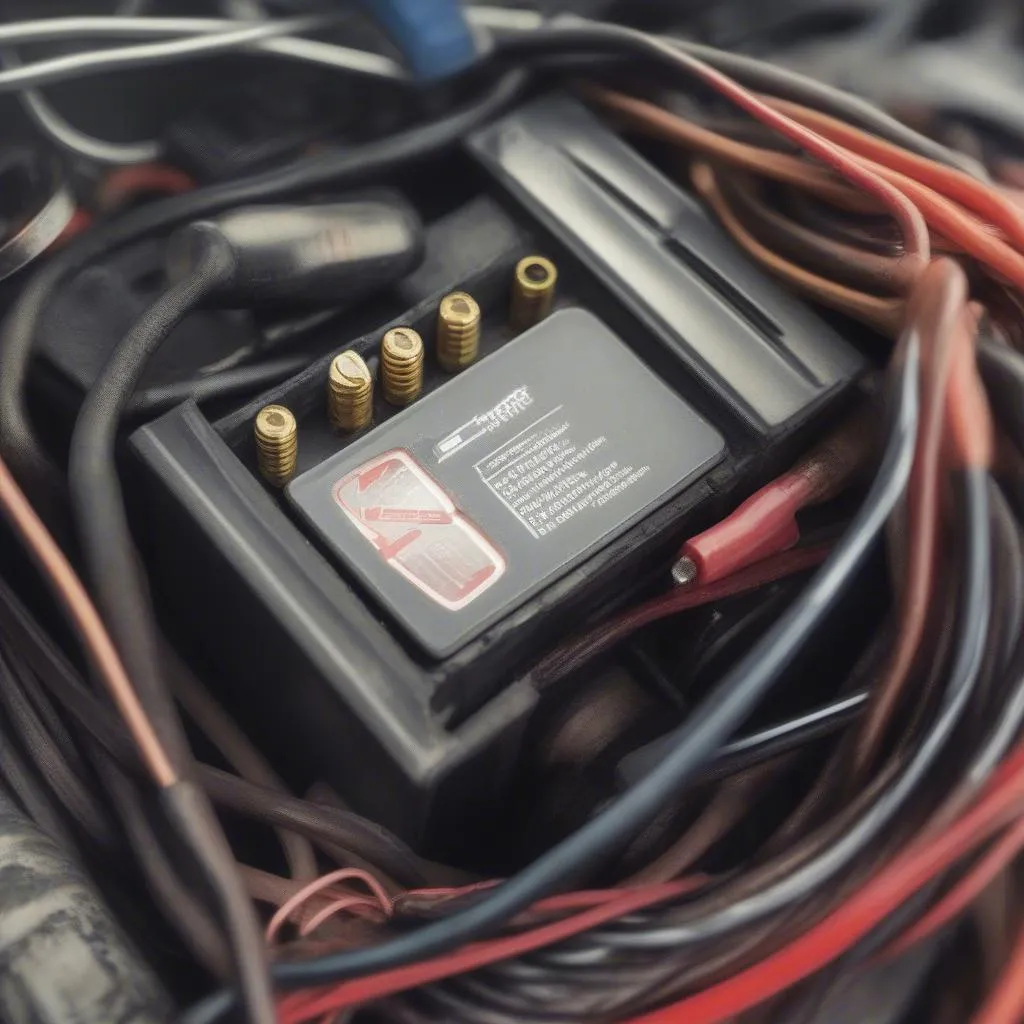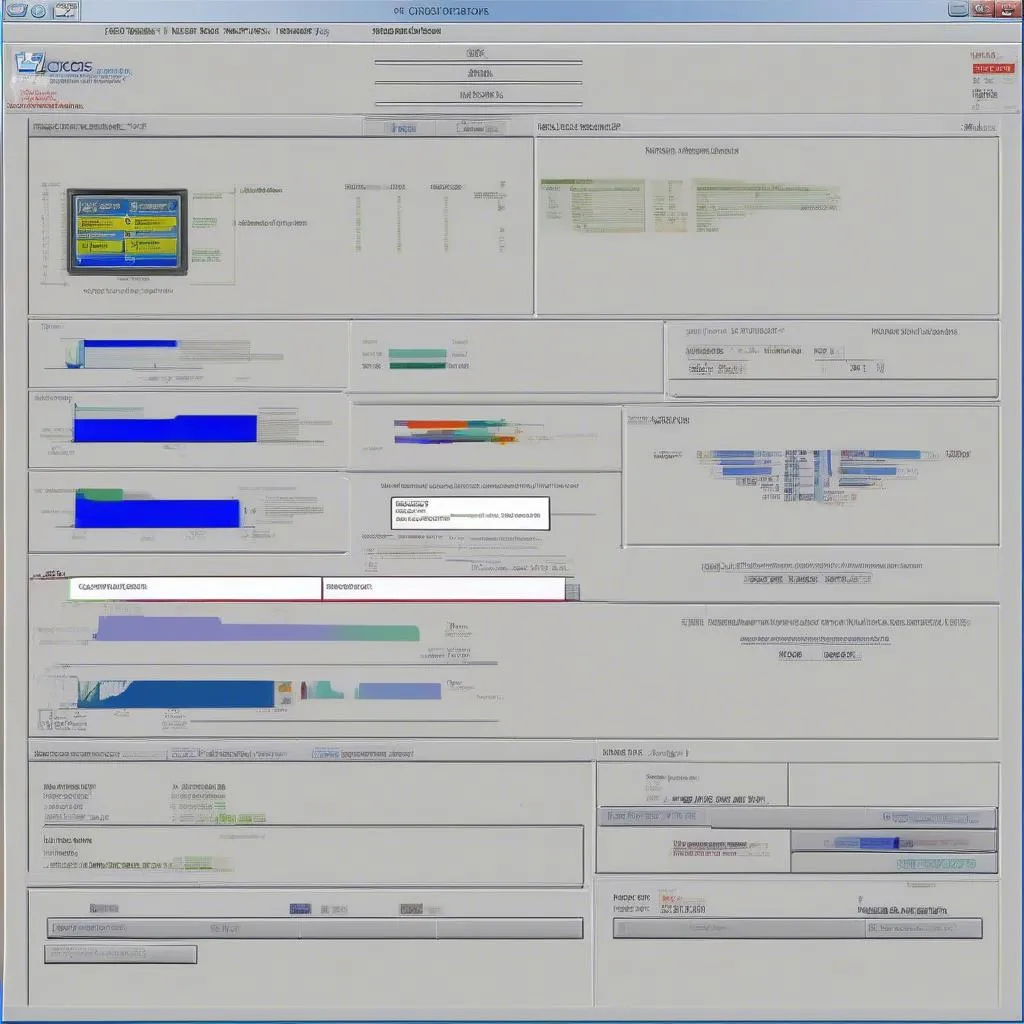Have you ever encountered the cryptic “01826 VCDS Supply Voltage Terminal 30” error code while diagnosing your car with a VCDS scanner? This error can be a head-scratcher, especially if you’re not deeply familiar with automotive electrical systems. Don’t worry, this article will break down this common error code in a way that’s easy to understand, whether you’re a seasoned mechanic or a DIY enthusiast.
Understanding the “01826 VCDS Supply Voltage Terminal 30” Code
In simple terms, this error code indicates a problem with the power supply to various electronic components in your car. Terminal 30 is a crucial junction in your vehicle’s electrical system that receives a direct supply of battery voltage. When the VCDS software throws this code, it means the voltage at this terminal is outside the acceptable range, which can disrupt the operation of multiple control units.
car-battery-terminal-30|car battery terminal 30|A close-up image of a car battery with the positive terminal connected and the label “Terminal 30” clearly visible.
Common Causes of the Error
The “01826 VCDS Supply Voltage Terminal 30” error can stem from a variety of issues, including:
- Weak or Failing Battery: A low battery voltage is one of the most common culprits behind this error code.
- Loose or Corroded Battery Terminals: Poor connections at the battery terminals can interrupt the flow of current.
- Faulty Alternator: The alternator is responsible for recharging the battery while the engine is running. A failing alternator can lead to insufficient voltage.
- Wiring Problems: Damaged, corroded, or loose wiring between the battery, alternator, and Terminal 30 can cause voltage drops.
- Faulty Control Module: In rare cases, a malfunctioning control module drawing excessive current can trigger the error.
car-alternator-charging-system|car alternator charging system|An image of a car alternator connected to the engine with its belt visible, highlighting its role in the charging system.
Troubleshooting Tips
Before you panic, there are several steps you can take to diagnose and potentially resolve the “01826 VCDS Supply Voltage Terminal 30” error:
-
Check the Battery: Begin by inspecting your car battery. Ensure the terminals are clean, tight, and free of corrosion. If you suspect the battery is weak, have it tested or consider replacing it.
-
Inspect the Alternator: A visual inspection of the alternator belt for wear and tear is a good starting point. If the belt appears loose or damaged, it’s crucial to address this. Next, use a multimeter to check the alternator’s output voltage while the engine is running. It should be around 13.5 to 14.5 volts.
-
Examine Wiring and Connections: Carefully trace the wiring from the battery to Terminal 30, looking for any signs of damage, loose connections, or corrosion. Repair or replace any problematic wiring as needed.
-
Consult a Professional: If you’re unable to pinpoint the issue, it’s advisable to seek assistance from a qualified automotive electrician or mechanic. They have the expertise and tools to diagnose complex electrical problems effectively.
mechanic-diagnosing-car-electrical-problem|mechanic diagnosing car electrical problem|A mechanic using a multimeter to check the voltage of a car’s electrical system, potentially diagnosing a Terminal 30 issue.
FAQs
Can a low battery cause other error codes besides “01826”?
Yes, a low battery can trigger a cascade of error codes as various control modules struggle to operate with insufficient voltage.
Is it safe to drive my car with this error code?
While your car might still run, driving with a persistent “01826” error is not recommended. It signifies an underlying electrical problem that could worsen, potentially leaving you stranded.
How much does it cost to fix a Terminal 30 voltage issue?
The repair cost can vary widely depending on the root cause. A simple battery replacement might cost under $200, while a faulty alternator or complex wiring issue could run into several hundred dollars.
Cardiagtech Can Help
Navigating automotive electrical issues can be challenging. For reliable diagnostic tools and expert assistance, consider reaching out to CARDIAGTECH. We offer a range of advanced automotive diagnostic products and resources to help you get to the bottom of those troublesome error codes.
Remember, timely diagnosis and repair are essential for maintaining your vehicle’s electrical system’s health and preventing potential breakdowns.



